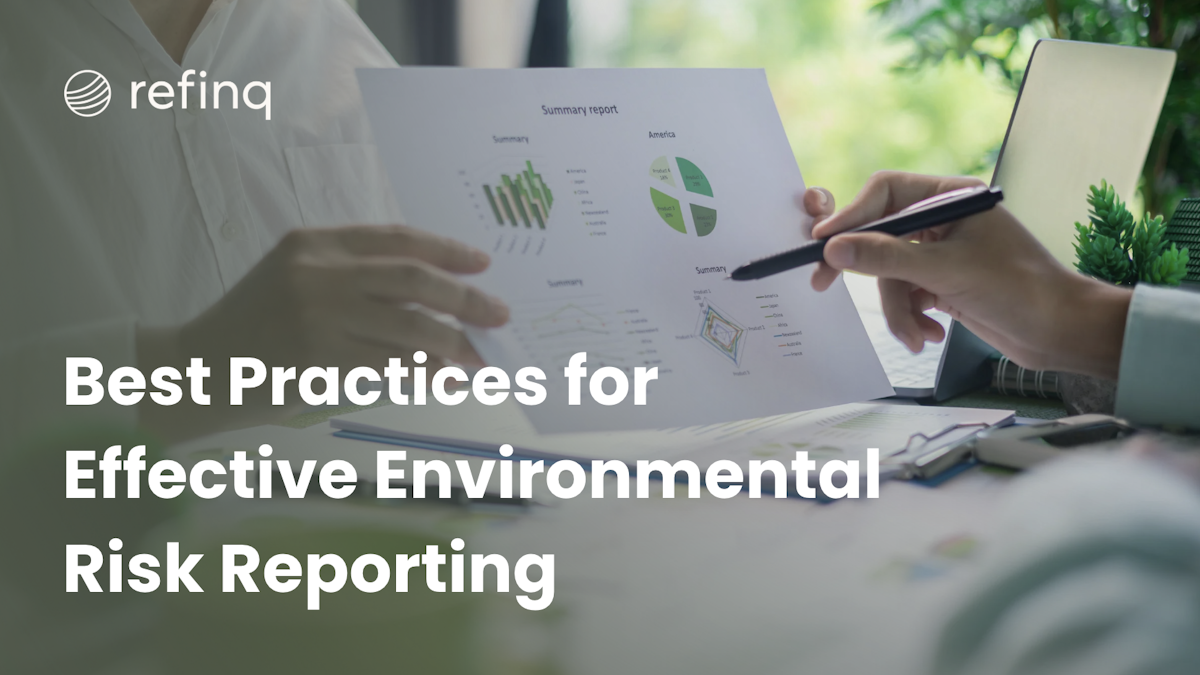Best Practices for Effective Environmental Risk Reporting

Best Practices for Effective Environmental Risk Reporting
In an era where environmental concerns are at the forefront of global discourse, businesses are increasingly held accountable for their environmental impacts. Effective environmental risk reporting has become essential for organizations aiming to maintain transparency, meet regulatory requirements, and build stakeholder trust. This article delves into best practices for environmental risk reporting, drawing insights from leading institutions and recent guidelines.
1. Understand the Importance of Environmental Risk Reporting
Environmental risk reporting involves disclosing information about potential environmental risks that could impact an organization's operations, financial performance, or reputation. Such reporting enables stakeholders to assess how well a company identifies, manages, and mitigates environmental risks.
The European Central Bank (ECB) emphasizes that institutions should adopt a strategic, forward-looking approach to climate-related and environmental risks. Their 2022 thematic review highlights the need for comprehensive risk management frameworks that integrate environmental considerations into business strategies.
2. Align with Established Frameworks and Guidelines
Adhering to recognized reporting frameworks ensures consistency and comparability in environmental disclosures. Organizations should consider aligning their reporting practices with frameworks such as:
Task Force on Climate-related Financial Disclosures (TCFD): Provides recommendations on disclosing climate-related financial risks and opportunities.
European Financial Reporting Advisory Group (EFRAG): Offers guidance on improving climate-related reporting, emphasizing the integration of environmental considerations into financial reporting.
UK Government's Best Practice Guide: Outlines examples of effective climate and sustainability reporting, focusing on governance, risk management, and strategy.
3. Incorporate Materiality Assessments
Determining the materiality of environmental risks is crucial for effective reporting. Materiality assessments help organizations identify which environmental issues are most significant to their operations and stakeholders.
The concept of double materiality—considering both the impact of environmental issues on the company and the company's impact on the environment—is gaining prominence. This approach ensures a comprehensive understanding of environmental risks and their implications.
4. Enhance Governance and Accountability
Strong governance structures are vital for effective environmental risk management. Organizations should establish clear roles and responsibilities for environmental oversight, ensuring that senior management and boards are actively engaged in environmental risk discussions.
The ECB's good practices highlight the importance of integrating environmental considerations into governance frameworks, including setting risk appetites and incorporating environmental metrics into performance evaluations.
5. Implement Robust Risk Management Processes
Effective environmental risk reporting requires comprehensive risk management processes that identify, assess, and mitigate environmental risks. Organizations should:
Conduct Due Diligence: Regularly assess environmental risks across operations and supply chains.
Classify Risks: Categorize environmental risks based on their potential impact and likelihood.
Integrate into Capital Adequacy: Consider environmental risks in capital planning and stress testing scenarios.
These practices ensure that environmental risks are systematically managed and reported.
6. Leverage Technology and Data Analytics
Advancements in technology offer tools to enhance environmental risk reporting. Platforms like EarthScan provide analytics and intelligence to assess climate risks, enabling organizations to make data-driven decisions and improve reporting accuracy.
Utilizing such tools can streamline data collection, analysis, and reporting processes, ensuring timely and accurate disclosures.
7. Foster Transparency and Stakeholder Engagement
Transparent communication about environmental risks and management strategies builds stakeholder trust. Organizations should:
Disclose Methodologies: Clearly explain how environmental risks are identified and assessed.
Report on Progress: Regularly update stakeholders on environmental performance and risk mitigation efforts.
Engage Stakeholders: Solicit feedback and incorporate stakeholder concerns into environmental strategies.
The UK Government's Best Practice Guide emphasizes the importance of clear, concise, and accessible reporting to facilitate stakeholder understanding.
8. Continuously Improve Reporting Practices
Environmental risk reporting is an evolving field. Organizations should commit to continuous improvement by:
Staying Informed: Keep abreast of emerging regulations, frameworks, and best practices.
Benchmarking: Compare reporting practices against industry peers to identify areas for enhancement.
Training: Invest in training programs to build internal expertise in environmental risk management and reporting.
Continuous improvement ensures that environmental risk reporting remains relevant, accurate, and aligned with stakeholder expectations.
Conclusion
Effective environmental risk reporting is integral to sustainable business practices. By understanding its importance, aligning with established frameworks, incorporating materiality assessments, enhancing governance, implementing robust risk management processes, leveraging technology, fostering transparency, and committing to continuous improvement, organizations can navigate environmental challenges and build resilience.
Adopting these best practices not only fulfills regulatory requirements but also positions organizations as responsible stewards of the environment, fostering long-term success and stakeholder trust.